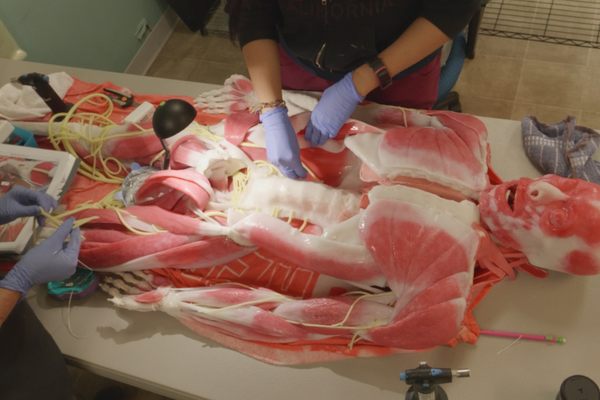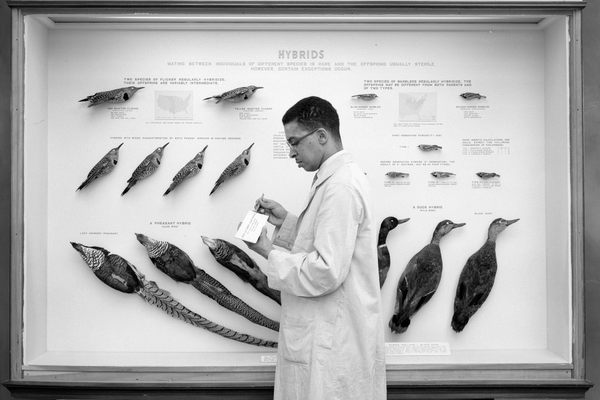The Extraordinary Life of the Freed Slave Who Taught Darwin Taxidermy
John Edmonstone was a mentor to the budding teenage naturalist.

John Edmonstone was born a slave, died a free man, and somewhere along the way taught Charles Darwin all he knew about skinning and stuffing a bird.
Edmonstone grew up in the late 1770s on a plantation owned by Scottish politician Charles Edmonstone in Demerara, a region of South America in what is now Guyana. There, the politician often entertained his son-in-law, Charles Waterton, who would later become a famed naturalist and conservationist. While in Demerara, Waterton frequently traveled into the rain forest to observe the jungle and collect bird specimens. These journeys could be perilous alone, so he had John Edmonstone accompany him, and taught him to skin and stuff creatures on the spot, before they had a chance to decay in the humidity of the jungle, according to a story on Ozy.com. Waterton had a distinct preservation strategy that he passed on to Edmonstone, to soak his specimens in a sublimate of mercury and hollow them out so they appeared more lifelike. During these expeditions, Edmonstone also gained an expansive working knowledge of the flora and fauna of South America.
John gained his freedom in 1817 after traveling to Glasgow with Charles Edmonstone, as the Slave Trade Act of 1807 made the purchase or ownership of slaves illegal within the British Empire. He took up residence at 37 Lothian Street, just blocks from the University of Edinburgh, and gained employment by teaching students taxidermy and stuffing specimens for the local museum. During his tenure, he stuffed a great many birds—including swallows, water ouzels, and chaffinches—as well as one 15-foot-long boa constrictor.

Eventually, in 1826, the skilled taxidermist found himself saddled with an unusually ambitious apprentice. Just 17 years old, Charles Darwin had enrolled in the university to study medicine, but soon realized he had no interest (or stomach) for tedious lectures and anesthesia-free surgeries. Leaning into his growing interest in ornithology, Darwin decided to study under Edmonstone. Every day for two months, Darwin paid Edmonstone a guinea for an hour-long lesson on stuffing birds of all kinds. The two grew close. As Darwin plucked feathers from swallows, Edmonstone told the teen about the tropical wildlife of his homeland. In his memoir, Darwin later called his mentor “an intimate,” recalling their many hours spent in conversation.
On his 1831 voyage on HMS Beagle, Darwin made his famous observation that finches across the Galapagos Islands had distinct differences in beak shape, suggesting all had evolved from a common ancestor. Darwin preserved the Galapagos finches using the techniques Edmonstone taught him, creating specimens that would become crucial in support of his theory on the evolution of species through natural selection.
Some historians suggested Darwin’s relationship with Edmonstone—along with the abolitionist beliefs of his two grandfathers—contributed to the naturalist’s famous hatred of slavery, writes Clifford B. Frith in Charles Darwin’s Life with Birds: His Complete Ornithology. Darwin first came face to face with slavery on HMS Beagle as well, where he saw children whipped and tortured.
Historians know very little about Edmonstone’s personal life—such as whether he married or had children—and his presence in history has been largely relegated to a footnote in Darwin’s biography. Much academic writing about Edmonstone employs racist language, even in stories published as recently as 1978. But certain scientists are making efforts to unearth Edmonstone’s story from the margins of scientific history. As Danielle Lee, a professor of biology at the University of Missouri, wrote in a column for Scientific American: “The next time I teach evolutionary biology, I am definitely including Edmonstone in my lectures. I hope others do as well.”

















Follow us on Twitter to get the latest on the world's hidden wonders.
Like us on Facebook to get the latest on the world's hidden wonders.
Follow us on Twitter Like us on Facebook